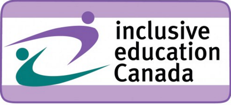by Nadine Bartlett Ph.D., Assistant Professor Educational Administration, Foundations and Psychology, Faculty of Education, University of Manitoba
There are no provincial educational policies in Manitoba that explicitly regulate the use of physical restraint and seclusion in schools. Nor are there provincial accountability mechanisms in place to monitor the use of physical restraint and seclusion. This report provides a summary of the results of an anonymous online survey of parents/guardians of children/youth with disabilities in the province of Manitoba about their children’s experiences with physical restraint and seclusion in schools (Bartlett & Ellis, 2020). Parents/guardians reported the following (Bartlett & Ellis, 2020):
- Limited or no consent to the use of restraint or seclusion
- An absence of written notification that restraint or seclusion had occurred
- Notification long after the restraint or seclusion had occurred
- The use of mechanical restraints (Posey cuffs)
- The use of practices known to have a higher risk of causing death (e.g. supine and prone holds)
- Prolonged restraint lasting 1–3 hours
- Daily restraint throughout the school year
- Authority figures holding a door shut and preventing a student from leaving
- Seclusion spaces with no door knob on the inside
- Modified door knobs that are difficult to open
- 4’ by 4’ cinderblock closets being used for isolation
- Daily seclusion (sometimes multiple times per day)
- Seclusion lasting 1–3 hours
- Physical injury (e.g., bruising, head injuries, pinched fingers)
- Emotional trauma (anxiety, depression, PTSD, school refusal, self-harm)
In addition to shining a light on this important issue, the report provides recommendations for policy and practice to ensure the emotional and physical safety of all.
